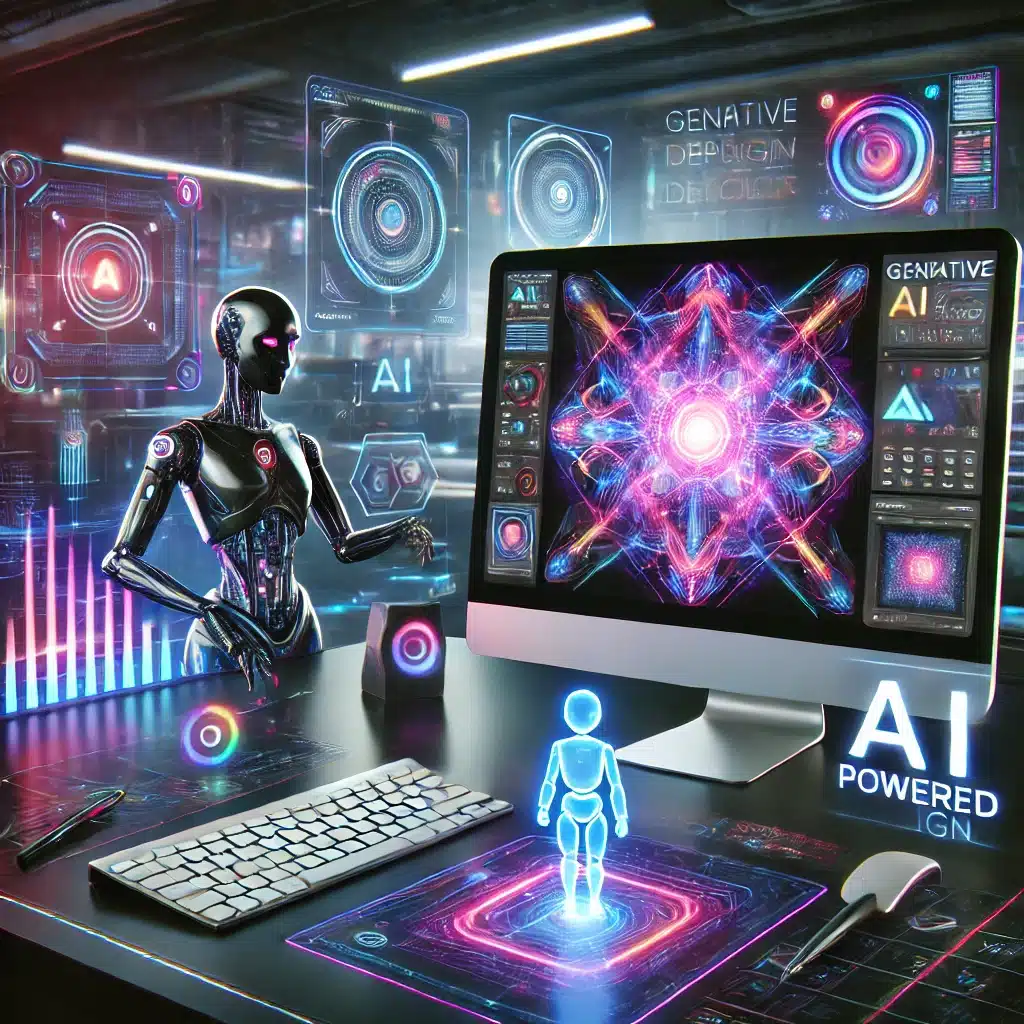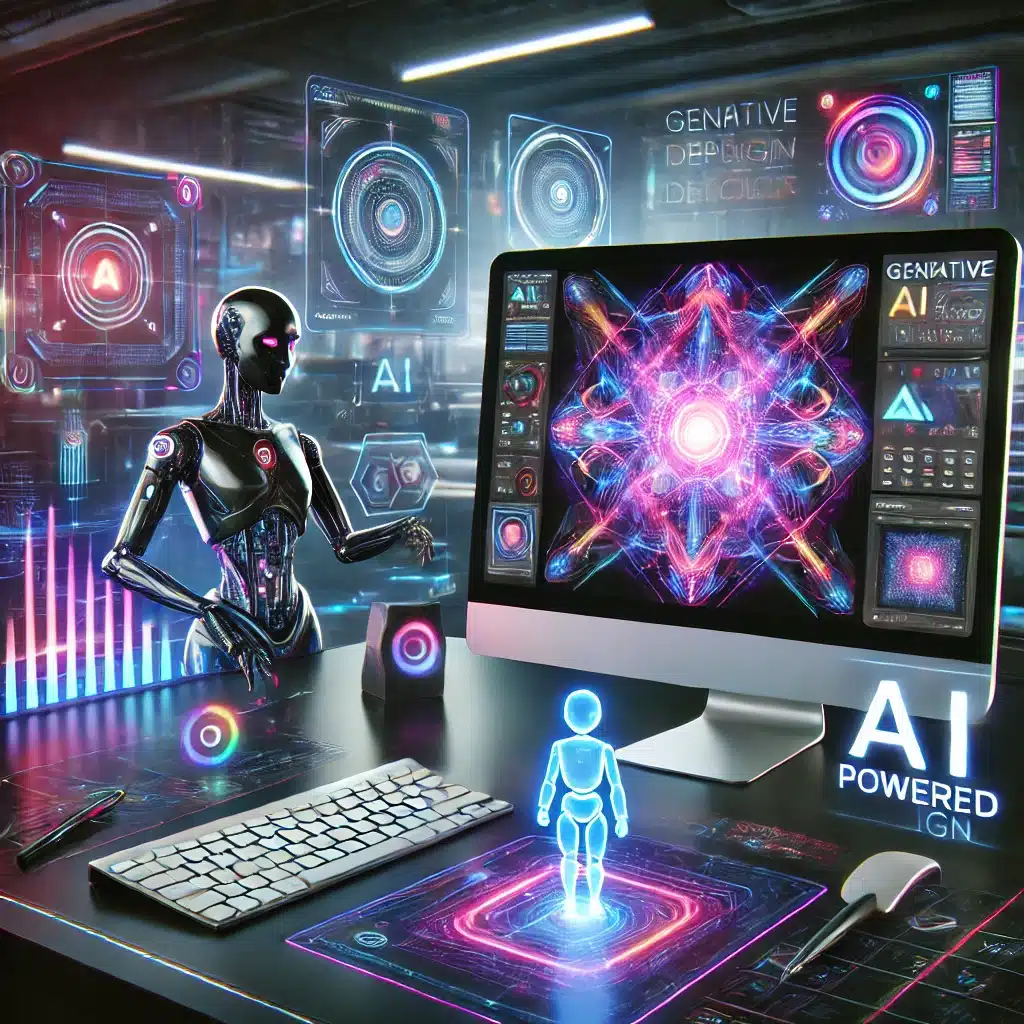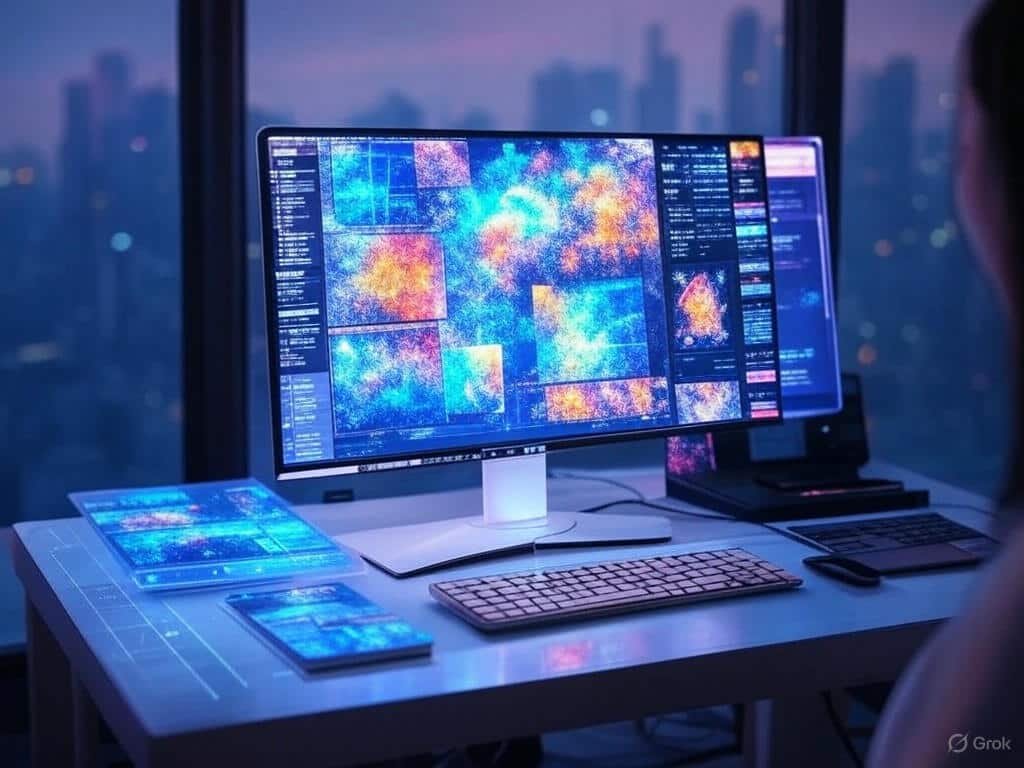The world of design is undergoing a massive transformation, driven by artificial intelligence. AI-powered design tools are no longer just assisting designers; they are actively reshaping the creative process. From generative AI that produces stunning visuals to intelligent design assistants that streamline workflows, AI is becoming an essential part of modern design.
This article explores the top generative AI design tools, AI creativity trends for 2025, and the future of AI-driven design innovation. Whether you’re a professional designer or a business looking to optimize visual content, these advancements will shape how you work in the coming years.
Understanding Generative AI in Design
What is Generative AI in Design?
Generative AI refers to artificial intelligence systems that create, modify, or enhance design elements with minimal human input. These AI-powered tools analyze patterns, learn from vast datasets, and generate creative outputs such as images, layouts, typography, and even 3D models.
How AI Enhances Creative Workflows
AI in design isn’t just about automation—it enhances creativity in several ways:
Speed & Efficiency – Reduces repetitive tasks, allowing designers to focus on innovation.
Automated Concept Generation – AI suggests design ideas based on trends, user preferences, and past work.
Smart Image Editing – AI tools refine images, remove backgrounds, and adjust lighting with precision.
Personalized Design Recommendations – AI analyzes audience behavior to create user-focused designs.
1. Top Generative AI Design Tools for 2025

With AI technology advancing rapidly, several powerful design tools have emerged. Here are some of the best AI-powered design tools in 2025:
1. Adobe Firefly
Adobe’s AI-driven design tool enables users to create high-quality visuals through text prompts, smart enhancements, and automated image adjustments.
2. Canva AI
Canva integrates AI-powered features such as Magic Resize, AI Background Remover, and Content Suggestions to simplify graphic design.
3. DALL·E
Developed by OpenAI, DALL·E generates unique AI-created artwork from simple text descriptions.
4. Runway ML
An AI-powered video and motion graphics tool, Runway ML is revolutionizing visual effects in the creative industry.
5. Figma AI
Figma’s AI-driven functionalities assist in UI/UX design, helping designers create intuitive interfaces faster.
2. AI-Driven Design Innovation: Trends for 2025
AI is pushing design boundaries, introducing new innovations that redefine the creative landscape.
1. AI-Powered Real-Time Collaboration
AI-based tools are improving team collaboration, allowing designers to receive real-time feedback and automated design suggestions.
2. AI-Generated 3D & Immersive Design
AI is making 3D modeling and VR/AR design more accessible, eliminating the need for manual rendering.
3. AI in Branding and Typography
AI algorithms now suggest font pairings, branding elements, and design patterns based on consumer behavior.
4. Ethical & Sustainable AI Design
AI is being used to promote eco-friendly and inclusive design, ensuring ethical considerations in automated creations.
3. How Generative AI is Transforming Graphic Design
AI is not just optimizing graphic design—it’s transforming it entirely.

1. AI-Generated Logos & Branding
Tools like Looka and Brandmark create custom logos based on industry trends and color psychology.
2. Smart Image Editing & Enhancement
AI removes backgrounds, enhances image resolution, and applies intelligent filters for professional-quality visuals.
3. AI-Powered Digital Art
Artists now use AI-driven platforms to generate unique artwork and concept designs based on simple text prompts.
4. Layout & Composition Automation
AI analyzes design aesthetics and suggests layout improvements for better visual impact.
4. AI in UX/UI Design: A Game Changer
User experience (UX) and user interface (UI) design are rapidly evolving with AI integration.
1. AI-Driven User Experience Optimization
AI tools analyze user behavior and suggest design improvements for enhanced usability.
2. Automated UI Design & Prototyping
Platforms like Figma AI generate interactive prototypes, reducing development time.
3. Personalized User Interfaces
AI customizes interfaces based on user behavior, making applications more intuitive.
4. AI for Accessibility
AI enhances accessibility by suggesting color contrast adjustments, voice navigation, and alternative text descriptions.
5. The Future of AI Creativity Tools
The next five years will bring even more AI-powered design innovations.
1. AI & Augmented Creativity
AI will act as a creative collaborator rather than just a tool.
2. AI-Generated Videos & Animation
AI is beginning to automate video editing, making high-quality productions easier to achieve.
3. Ethical Challenges in AI-Generated Art
The rise of AI art raises concerns about copyright issues and authenticity in creative work.
4. The Role of AI in Future Design Careers
While AI enhances productivity, human designers will remain essential for conceptual creativity and strategic thinking.
6. Benefits of Using AI-Powered Design Tools

AI-powered design tools offer multiple advantages:
- Faster Turnaround Time – AI automates tedious tasks, speeding up design workflows.
- Cost-Effective Solutions – AI reduces the need for extensive design teams.
- Enhanced Creativity – AI suggests new design possibilities beyond human imagination.
- Improved Accuracy – AI ensures precision in colors, layouts, and compositions.
7. How to Choose the Right AI Design Tool
When selecting an AI-powered design tool, consider:
- Features & Capabilities – Does the tool offer automation, smart suggestions, and collaboration?
- Ease of Use – Is it beginner-friendly or designed for professionals?
- Integration with Other Tools – Can it work alongside your existing design software?
- Cost & Accessibility – Does it fit your budget and creative needs?
8. Challenges and Limitations of AI in Design
Despite its benefits, AI in design has limitations:
- Lack of Human Emotion – AI lacks the creative intuition of human designers.
- Risk of Repetitive Design – Over-reliance on AI could lead to generic-looking visuals.
- Ethical Concerns – Copyright and originality issues remain a challenge.
Conclusion
AI-powered design tools are shaping the future of creativity. By enhancing efficiency, providing intelligent recommendations, and unlocking new design possibilities, AI is becoming an indispensable asset for designers. While challenges remain, the future of AI-driven design innovation promises to revolutionize the creative landscape.




